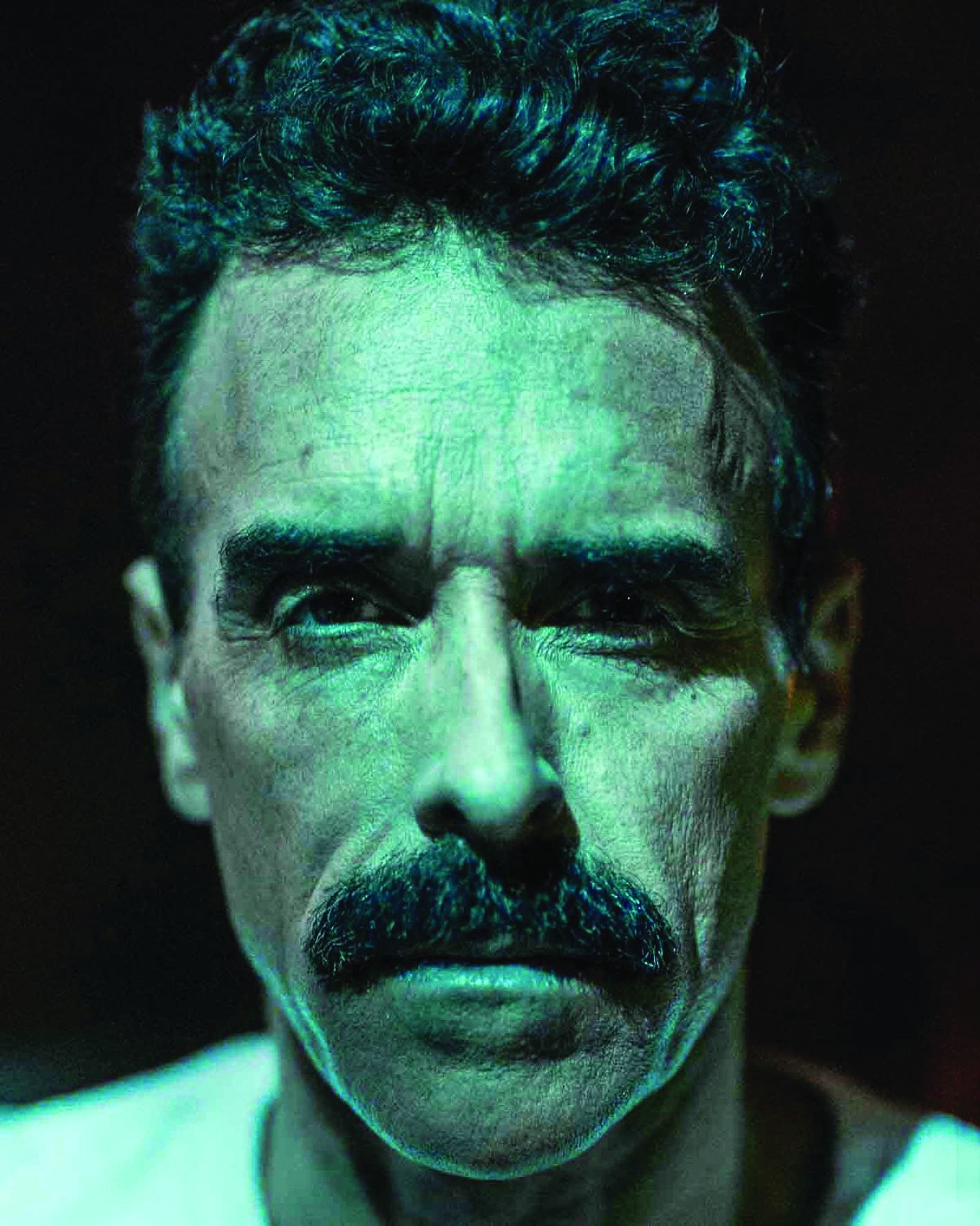Bloodshot Heart is one hell of a title. It’s evocative in a visceral way – in every sense of the word. For me, it calls to mind the image of a swollen heart, its crimson flesh straining against the polluted arterial liquid within: a manifestation of deep emotional scars. It’s a fitting title, then, for Parish Malfitano’s lurid first feature, which debuted at the 2020 Revelation Perth International Film Festival,[1]Admittedly, things are somewhat more complicated than this: Bloodshot Heart’s world premiere was virtual, in July’s online-only ‘Couched’ iteration of the film festival, which subsequently announced a physical edition in December of the same year (at which Bloodshot Heart was slated to make its big-screen debut). with all the gory genre grotesquerie its title promises.
Typically, this is the point at which I’d offer up a half-hearted synopsis of the film, but Malfitano’s screenplay isn’t so forthcoming as to lend itself to easy summary. The premise is straightforward enough, I suppose: Hans (Richard James Allen) is a decidedly off-kilter driving instructor whose life begins to veer out of control when he and his mother, Catherine (Dina Panozzo), take in a new lodger, Matilda (Emily David). Beyond that set-up, the particulars of the narrative are obfuscated and muddled by an increasingly oneiric atmosphere that weaves together fantasy and reality so tightly that the two threads become inseparable.
Bloodshot Heart is an experimental film, but don’t be misled into thinking it’s a purely aesthetic exercise. Malfitano is frolicking through familiar genre playgrounds – a little psychological horror here, some thriller characteristics there, completed by a smattering of sexuality and violence – but evinces little interest in catering to audience expectations.
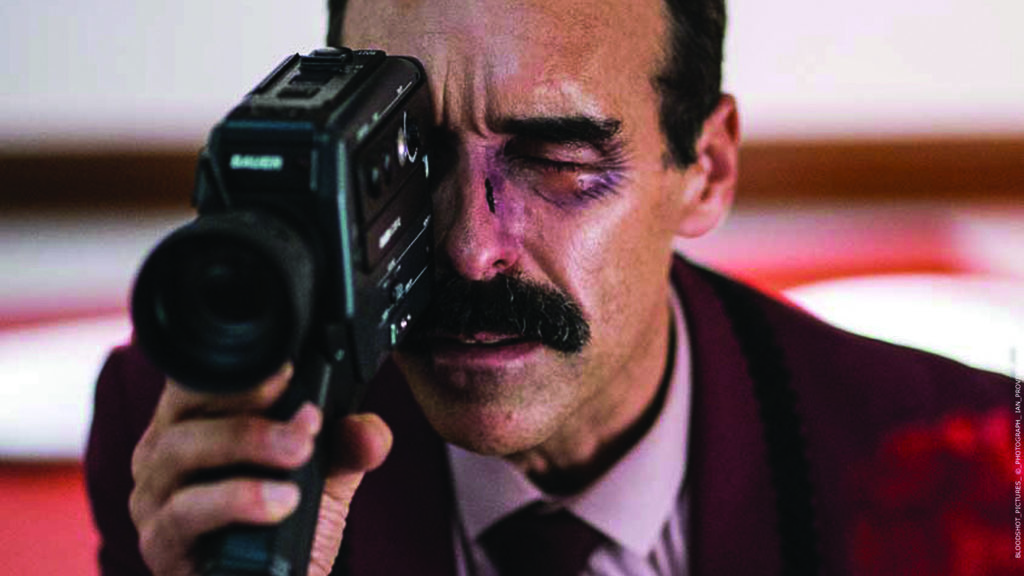
I’m not solely referring to mainstream audience expectations, either. Yes, a film in which a creepy middle-aged man fixates on a young, attractive flatmate suggests a kind of conventional approach, and, yes, Bloodshot Heart sidesteps this. As mentioned, the lines between Hans’ fantasies and reality are rarely demarcated, instead bleeding together in such a way that any sense of narrative solidity swiftly evaporates; mainstream thrillers tend to make such distinctions distinct. The look of the film clashes with contemporary conventions, too. As Malfitano explains:
The colour palette was […] a direct response to Australian cinema, where usually a psychological thriller such as this would be desaturated, stale and bathed in blues. I wanted to work against our expectations, linking back to ’70s Italian and American cinema.[2]Parish Malfitano, quoted in Paul Kelman, ‘Bloodshot Heart: A Direct Response to Australian Cinema’, FilmInk, 8 July 2020,<https://www.filmink.com.au/bloodshot-heart-direct-response-australian-cinema/>, accessed 16 November 2020.
Undeniably, his film owes a debt to such films of half-a-century prior. But rather than indulging in the all-too-common temptation to pay meticulous tribute to his influences, Malfitano isn’t trying to make a modern giallo, nor a David Lynch / Brian De Palma knock-off. This might disappoint genre devotees looking for a tribute to their favourite films, but it speaks to the director’s attempt to craft something that – despite swimming in a soup of subgenre tropes and traditions – is deferential rather than referential.
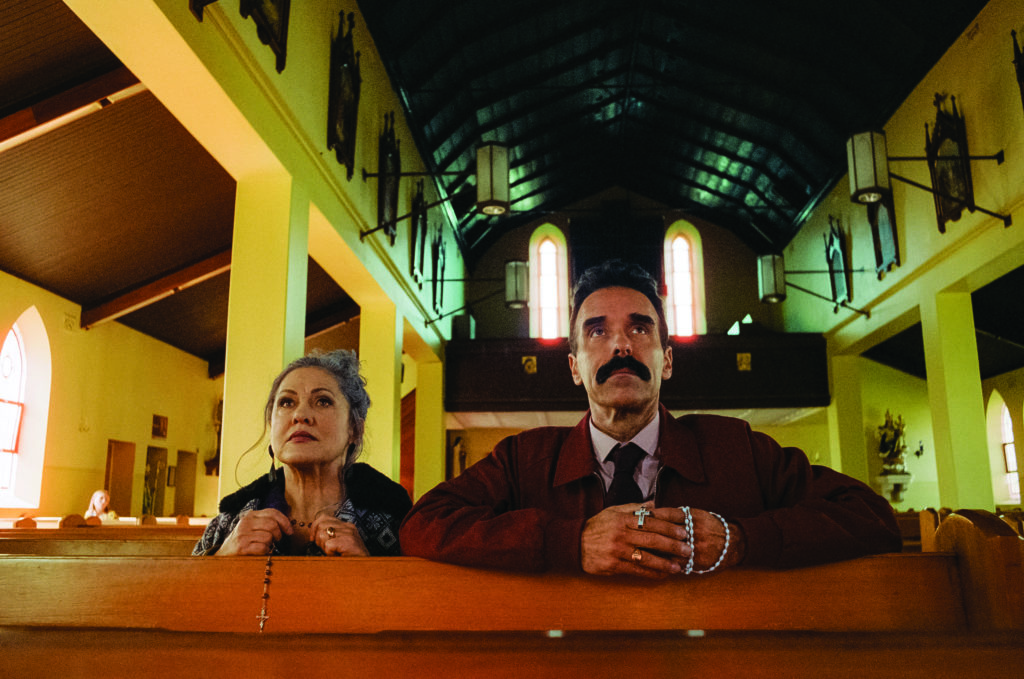
All the colours
Giallo – an Italian subgenre popular in the 1970s – is a huge influence on Bloodshot Heart, whether in terms of Ola Turkiewicz’s harpsichord-heavy score, aping Ennio Morricone’s work on films like The Bird with the Crystal Plumage (Dario Argento, 1970), or the rich, saturated colour scheme (reminiscent of the films of Argento and Mario Bava, among others). But where neo-gialli tend to take a self-reflexive approach – think: Berberian Sound Studio (Peter Strickland, 2012) or, on the schlockier end of the spectrum, The Editor (Adam Brooks & Matthew Kennedy, 2014) – Bloodshot Heart cuts its own path.
This influence isn’t surprising when you examine the director’s earlier works. His preceding films, the shorts Straniero[3]Italian for ‘foreign’. (2017) and Peeling Back the Light (2016), each unmistakably crib the woozy, saturated aesthetic that defines pivotal gialli. The former has a mystical, Gothic-adjacent vibe that presages Bloodshot Heart’s ambiguous, unreliable-narrator storytelling approach, while Peeling Back the Light leans into an atmosphere of sexualised surrealism. That film – centred on a starlet who fakes her own death to cement her idealised, objectified identity in the eyes of the public – lays the groundwork for the way Bloodshot Heart plays with amorphous identities and the fragile membrane between past and present.
Significantly, Malfitano’s short works feel more indebted to giallo than his first feature does. Straniero’s dialogue and intertitles are entirely Italian, for one, while Peeling Back the Light’s use of harsh lighting to obscure the background of its protagonist’s seemingly sumptuous mansion recalls Lucio Fulci’s striking, anti-realist approach in films like A Lizard in a Woman’s Skin (1971). Both shorts showcase gory moments of extremity – a young boy taking a pair of scissors to his feet; a woman peeling back skin from her face[4]Given that Bloodshot Heart concludes with Hans’ suicide by consuming chloroform, it’s safe to say that if you were to start chronicling Malfitano’s preoccupations as an auteur, self-harm would be towards the top of the list. – that feel entirely in line with the exploitation aesthetic endemic to the giallo genre.
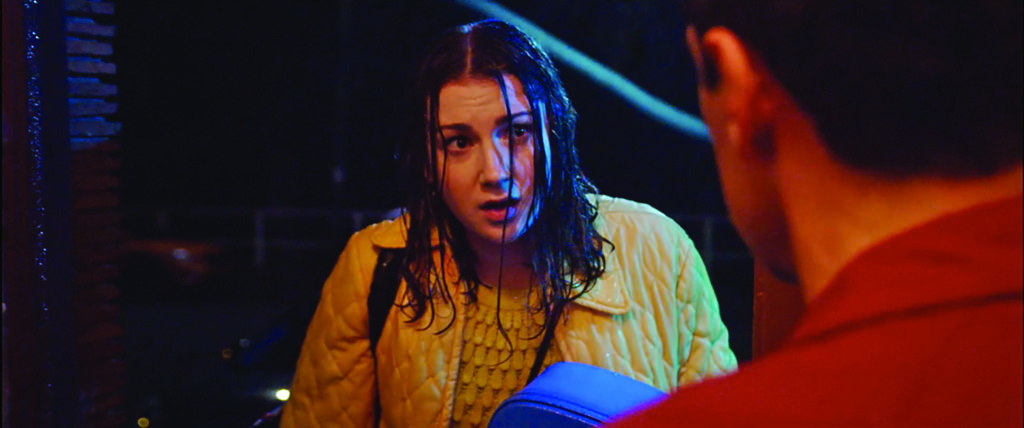
It’s not that Bloodshot Heart isn’t rich with giallo influences; I’ve mentioned the stylistic ones already, and there are explicit references too, as when Hans stumbles into a ‘Euroslash’ theatrical double feature[5]The films featured – Il sangue di due donne (‘The Blood of Two Women’) and Der Komponist (‘The Composer’) – might be fictional, but their titles alone speak to Malfitano’s influences. midway through the film. But they’re dialled down in comparison to the director’s earlier work. Susan Lumsdon’s cinematography is arresting and very impressive, but the film’s digital photography lends it a crispness that clashes with attempts to evoke a retro look – particularly when compared with the hazy sheen of Peeling Back the Light. The film also features brief moments of Super 8 footage in flashback; given how effectively unnerving these short scenes are, part of me wonders if the film’s already-impressive cinematography would’ve been even more gripping if, say, the whole thing had been shot on 16mm.
Bloodshot Heart does feature its own moments of violence and gore (mostly late in the piece, when Hans orchestrates a disastrous attempt to kidnap and then rescue Matilda), and also flashes of sexuality (particularly in that ‘Euroslash’ double feature, when Hans sails off into a reverie imagining pretty well the entire audience around him getting it on). But there’s nothing here that feels as shocking as the exploitation-cinema approach evident in the aforementioned shorts. This is a film enamoured of giallo cinema, but it’s trying to neither re-create nor reinvent the genre; rather, it’s merely doffing its hat to genre masters of an earlier era.
Mind you, giallo isn’t the only influence in the film – American genre cinema has a heavy hand in the proceedings, too. When Hans and the camera indulge in a spiralling reverie early in the film, it’s hard not to think of De Palma’s similarly extravagant gestures in films like Body Double (1984).[6]Indeed, in his interview with FilmInk, Malfitano specifically identifies De Palma’s camerawork as an influence: ‘Certain directors have influenced me in very specific ways [… such as] stylistically, in terms of how Brian De Palma and [Bernardo] Bertolucci move the camera.’ Malfitano, quoted in Kelman, op. cit. And perhaps it’s just my enduring obsession with Mulholland Drive (Lynch, 2001), but I couldn’t help seeing shades of that film’s Club Silencio in a blue-tinged nightclub scene in which Hans is transfixed by Matilda’s singing – particularly given the obvious dubbing (though this could also just be an another reference to Italian cinema).
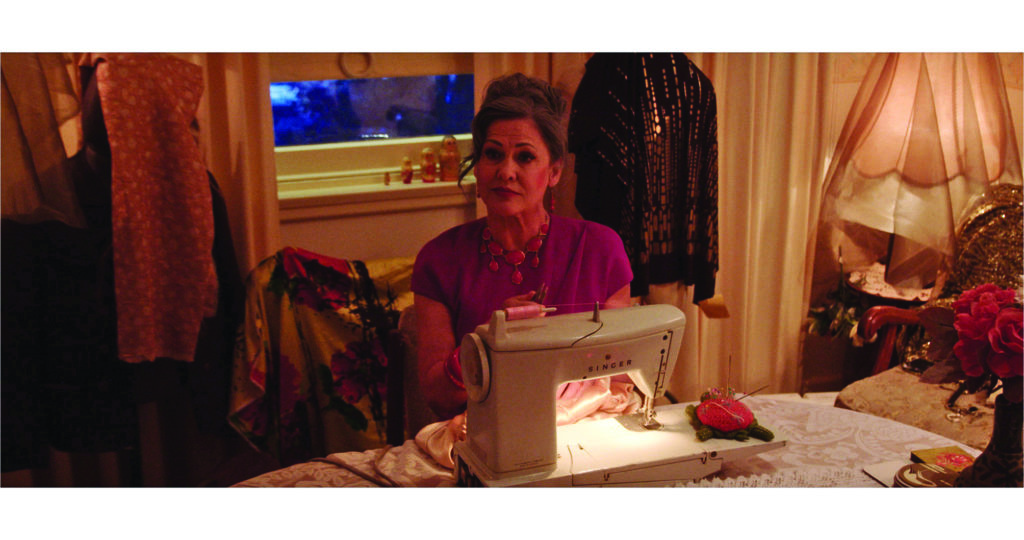
For the most part, Malfitano’s melange of influences works. The most successful element, for me, is the way these genre signifiers support Bloodshot Heart’s disorienting storyline. Hans is about as unreliable narrator as you get; very early in the film, we see him flush his meds, and shortly thereafter it begins sliding between fantastical hallucinations and an approximation of reality, with no clear demarcation between the two. By the time the film ends – in a swirling tempest of violence and confusion – the precise particulars of the narrative are lost in the wind. The end result is a film that leans heavily on its atmosphere and aesthetic, and there’s more than enough solidity there to provide strong foundations; this is a movie that would be captivating even without dialogue.
Where I think Bloodshot Heart oversteps its mark is in its use of colour. Not its palette, per se; the bold colours and expressionist lighting are necessary in the context of what Malfitano’s trying to achieve. But the decision to align each significant character heavily with one colour – Hans, red; Catherine, blues and purples; Matilda, oranges and yellows – feels overly simplistic. I think the sensations the director is attempting to attach to these colours are effective; for example, Malfitano has said that ‘the recurrence of the colour yellow throughout the film symbolises Hans’ growing delusion as he moves further towards a dream-state’.[7]ibid. I feel that the way that Hans’ more erratic behaviour is paired with a shift in the colour palette works quite well. What I don’t find convincing is how, in limiting the costuming to one colour almost entirely, these choices constrain the palette and ultimately feel a little … undergraduate? Perhaps it’s just that I had my film-critic hat on while watching the film, but it was hard to miss how blatant the colour alignment with characters is. Had Bloodshot Heart dialled these aspects down somewhat as opposed to shoving them down its audience’s throat, I think the overall effect would be more compelling.
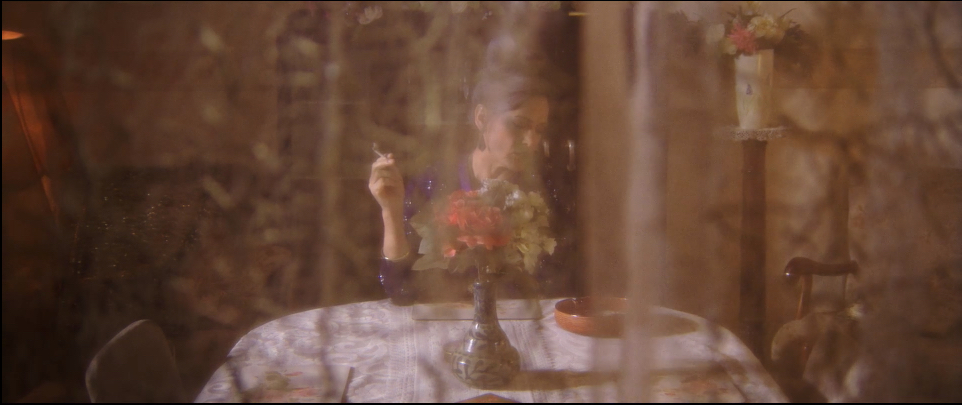
Elusive signifiers
One of the reasons I’m dwelling so intently on Bloodshot Heart’s influences and aesthetics is the slipperiness of its storytelling. Beyond its formal characteristics, though, it’s worth examining what the film has to offer audiences. I want to pre-empt this analysis by noting that, when it comes to genre cinema, I think aesthetic pleasure can be sufficient. A film like this can be compelling purely as a result of its ability to create and sustain a dreamlike atmosphere as well as to engage its audience through allusions to a mode of filmmaking largely underrepresented nowadays. All of which is to say, I’m not sure if Bloodshot Heart is really ‘about’ anything, and I don’t think that’s a problem, necessarily.
Thematically, the most enduring aspects of the film are its most enigmatic. The ambiguity of identity is a recurring feature. For instance, an early, dizzying scene finds Hans acting as Matilda’s driving instructor, with their car trapped doing loops around a roundabout as Hans slips into a catatonic state. In the blink of an eye, Matilda has been replaced by another student (Erica Long), and the disconnect is never clarified. Later, Hans confronts a male interloper from Matilda’s past in their apartment lobby, then finds that he’s facing a woman wearing the same outfit. There’s no direct thematic intent here, necessarily, but in the context of the film’s unravelling reality – and Hans’ identity as an Italo-Australian migrant – it’s thought-provoking.
There’s a kind of genre purity here, a clear-eyed desire to indulge in aesthetic maximalism and return to an increasingly rare mode of filmmaking without the overtly self-reflexive approach that’s commonplace among the film’s contemporaries.
That moment of a man becoming a woman feels potent, particularly given the way Bloodshot Heart’s screenplay plays with gender. There are small allusions to the fluidity of gender and sexuality when a drag queen (Oliver Levi-Malouf) introduces Matilda’s concert, or in how Hans’ proto-sexual fixation on Matilda is echoed in an earlier encounter with a male student (Darren Kumar). There are larger moments, too; midway through the film, we see the message ‘Sarah is dead / I’m not her’ scrawled in lipstick on Hans’ mirror. (Sarah – played by Hazel Annikki Savolainen – is a woman from Hans’ past, seen in fantasies and flashbacks; but her role and history are, like much within the film, never fully explained.)
All of this is evocative without specifically evoking anything. It’s interesting that the film’s brief moments of sexuality – Hans’ daydream in the theatre, or dash-cam footage of a pair of his associates getting it on (used as blackmail) – are associated with cameras or film, but these elements never cohere into anything particular.
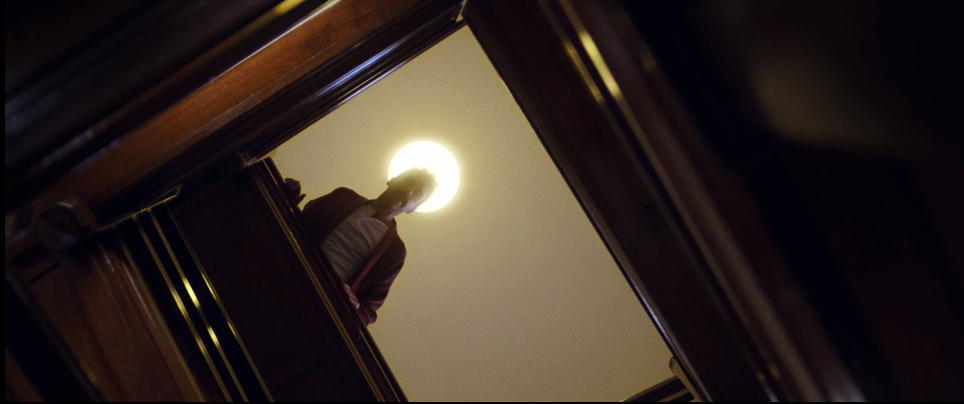
What does the film have to say about gender, or migrant culture within Australia, or Hans’ relationship with his mother? I can’t come up with a solid answer to any of these questions. Perhaps the intent is to position Hans as an exemplar of toxic masculinity, as some online reviewers have posited,[8]See the reviews of the film on Letterboxd by Justice-Noah Malfitano – specifically, the assertion that the film is ‘ a masterful critique of misogyny and the male gaze’ – and Cosette Mangas, who describes the film as ‘an exceedingly powerful story critiquing toxic masculinity and it’s [sic] detrimental, oppressive effects on women’. ‘Reviews’, ‘Bloodshot Heart (2020)’, Letterboxd, <https://letterboxd.com/film/bloodshot-heart/reviews/>, accessed 16 November 2020. but given the character’s unreliability and lack of cultural cachet – and, thereby, erosion of male privilege – I find myself sharing critic Adrian Martin’s discomfort with such assertions.[9]Adrian Martin, ‘Film Review: Bloodshot Heart Is Giallo All the Way’, screenhub, 7 July 2020,<https://www.screenhub.com.au/news-article/reviews/film/adrian-martin/film-review-bloodshot-heart-is-giallo-all-the-way-260682>, accessed 16 November 2020. Hans is a toxic man, no doubt, but he’s hardly an incarnation or interrogation of the pathology of broader toxic masculinity.
That’s not a critique of the film, necessarily. The critical search for examination of misogyny or toxic masculinity in texts without much to say on either subject is frequently overblown (I’ve been guilty of this in the past), and Bloodshot Heart’s failure to substantively address the issue isn’t a failure of the film. There’s a kind of genre purity here, a clear-eyed desire to indulge in aesthetic maximalism and return to an increasingly rare mode of filmmaking without the overtly self-reflexive approach that’s commonplace among the film’s contemporaries. While Bloodshot Heart might disappoint those looking for a conventional thriller or a slavish giallo re-creation, its resultant hybrid approach, while uneven, is a captivating example of what Australian cinema at the margins is capable of.
Endnotes
| 1 | Admittedly, things are somewhat more complicated than this: Bloodshot Heart’s world premiere was virtual, in July’s online-only ‘Couched’ iteration of the film festival, which subsequently announced a physical edition in December of the same year (at which Bloodshot Heart was slated to make its big-screen debut). |
|---|---|
| 2 | Parish Malfitano, quoted in Paul Kelman, ‘Bloodshot Heart: A Direct Response to Australian Cinema’, FilmInk, 8 July 2020,<https://www.filmink.com.au/bloodshot-heart-direct-response-australian-cinema/>, accessed 16 November 2020. |
| 3 | Italian for ‘foreign’. |
| 4 | Given that Bloodshot Heart concludes with Hans’ suicide by consuming chloroform, it’s safe to say that if you were to start chronicling Malfitano’s preoccupations as an auteur, self-harm would be towards the top of the list. |
| 5 | The films featured – Il sangue di due donne (‘The Blood of Two Women’) and Der Komponist (‘The Composer’) – might be fictional, but their titles alone speak to Malfitano’s influences. |
| 6 | Indeed, in his interview with FilmInk, Malfitano specifically identifies De Palma’s camerawork as an influence: ‘Certain directors have influenced me in very specific ways [… such as] stylistically, in terms of how Brian De Palma and [Bernardo] Bertolucci move the camera.’ Malfitano, quoted in Kelman, op. cit. |
| 7 | ibid. |
| 8 | See the reviews of the film on Letterboxd by Justice-Noah Malfitano – specifically, the assertion that the film is ‘ a masterful critique of misogyny and the male gaze’ – and Cosette Mangas, who describes the film as ‘an exceedingly powerful story critiquing toxic masculinity and it’s [sic] detrimental, oppressive effects on women’. ‘Reviews’, ‘Bloodshot Heart (2020)’, Letterboxd, <https://letterboxd.com/film/bloodshot-heart/reviews/>, accessed 16 November 2020. |
| 9 | Adrian Martin, ‘Film Review: Bloodshot Heart Is Giallo All the Way’, screenhub, 7 July 2020,<https://www.screenhub.com.au/news-article/reviews/film/adrian-martin/film-review-bloodshot-heart-is-giallo-all-the-way-260682>, accessed 16 November 2020. |
